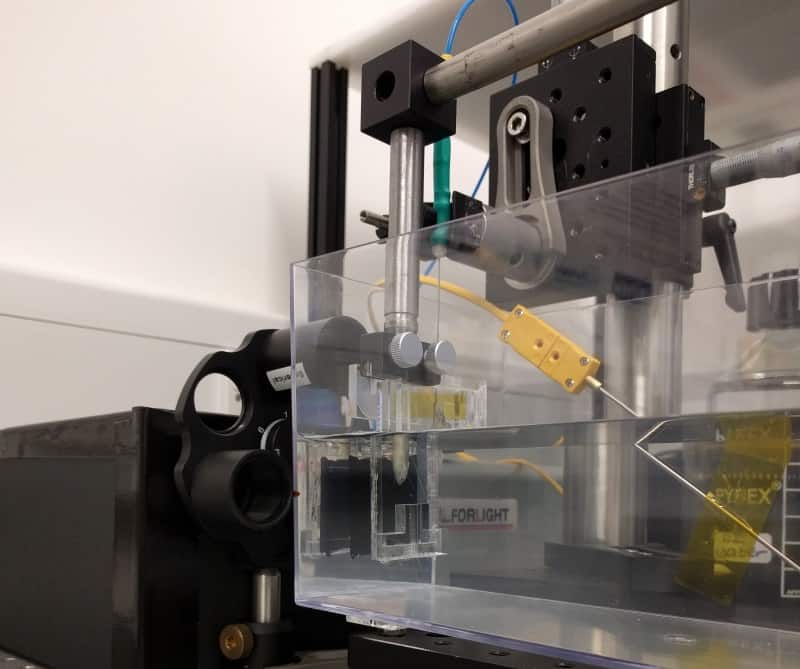
The first ultrasound imaging device that converts acoustic signals directly into light has been created by Hyeonggeun Yu and colleagues at North Carolina State University in the US. The device was fabricated by depositing an organic LED onto a piezoelectric crystal and it can produce real-time images without the need for signal processing. This approach could significantly reduce the costs of advanced ultrasound imaging techniques, making them far more accessible in applications including engineering and medicine.
Ultrasound is an increasingly popular technique for imaging the interiors of objects – animate and inanimate. It works by transmitting sound waves into an object using a piezoelectric transducer, then using the same transducer to pick-up sound reflected from structures within the object. The resulting voltages in the transducer are then converted into electrical signals, from which images can be reconstructed by a computer. Since ultrasound achieves low cost, real-time imaging without the need for powerful magnets or ionizing radiation, it offers significant advantages over approaches such as magnetic resonance imaging and X-ray scans.
Recently, improvements to ultrasound technology have replaced single, moveable transducers with large arrays of over 10,000 devices, allowing for scans with far higher resolutions and image production speeds. However, these newer techniques involve far more sophisticated hardware, and require far more complex approaches to signal processing compared with previous approaches. This significantly drives up the cost of ultrasound imaging, making it inaccessible to many groups that would benefit from the technology.
OLED on PZT
In their study Yu’s team found a way of avoiding signal processing by fabricating a layered organic LED (OLED) on top of a lead zirconate titanate (PZT) piezoelectric crystal. In the resulting “p-OLED”, the voltages induced by ultrasonic waves are converted directly into light, which is displayed on a screen built into the transducer itself – eliminating the need for signal processing.

All-optical ultrasound delivers video-rate tissue imaging
Yu and colleagues demonstrated this concept with an 8×8 array of p-OLED transducers immersed in water – each of which produced a 1×1 cm pixel in the final ultrasound image. With a total thickness of just 120 nm, the organic LED screen had a high luminescence and low turn-on voltage, while demonstrating a high conversion efficiency between mechanical and optical energy.
The team now hopes that through relatively simple improvements to their setup, they will be able to produce images with resolutions as high as 500×500 pixels. They also believe they will soon be able to manufacture their p-OLED for just around $100 – a remarkable improvement on the price tags of previous transducer arrays, which could exceed $100,000. Ultimately, these improvements could make advanced ultrasound imaging accessible for those providing high-demand medical services such as foetus imaging, drug delivery, and early cancer detection. Elsewhere, it could lead to far more cost-effective ways for engineers to monitor the structural health of buildings and infrastructure.
The new device is described in ACS Applied Materials & Interfaces.
